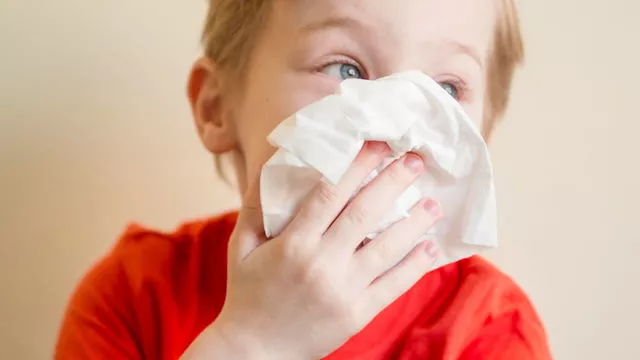Ani Korobova, a pediatrician at the DocDeti clinic, explained why children often have nosebleeds, how to help, and in which cases it is worth calling an ambulance.
 11459
11459
Nosebleeds are common in children. In the nasal passages there are many blood vessels located close to the surface, and in the anterior third of the nasal septum there is a special Kisselbach zone, which is also densely permeated with blood vessels. Because of this, blood vessels are easily damaged by inflammation or injury. In childhood, frequent nosebleeds are usually benign.
The most common possible causes are:
- dry air at home;
- removing dry crusts from the nose with a finger;
- trauma;
- nasal foreign body;
- allergic or infectious rhinitis;
- use of medicinal sprays, such as topical corticosteroids.
- Place the child slightly tilted down.
- Pinch the lower part of the nose (wings) between your index finger and thumb and hold for 10 minutes. Adult children can do this themselves.
- After 10 minutes, relax your fingers and check if the bleeding has stopped, usually the bleeding stops after 5-10 minutes.
- If the bleeding has not stopped after another 10 minutes pinching, it is worth dripping vasoconstrictor drops/sprays into the nasal passages.
- Bleeding does not stop for more than 30 minutes.
- The bleeding occurred after a head injury.
- The child’s weakness and lethargy is increasing.
- The child is pale and does not respond to your words.
< /ul>
Why can children bleed from the nose in their sleep?
Again, the most common reason is dry air. This usually happens in summer or winter, when air humidity is low and it is difficult to achieve optimal microclimate parameters for moisturizing mucous membranes. And dry mucous membranes are more sensitive to trauma. And if during sleep children hypothetically buried themselves in a pillow or turned from one side to the other, dry mucous membranes can provoke bleeding.
How to help?
When to call an ambulance?
< li>Loss of consciousness.
What should not be done?
Panic. When parents are worried, children may become even more frightened.
Tilt your head back.Blood may flow down the back of your throat, causing vomiting or coughing.
Place a tissue up your nose , gauze or something else.
